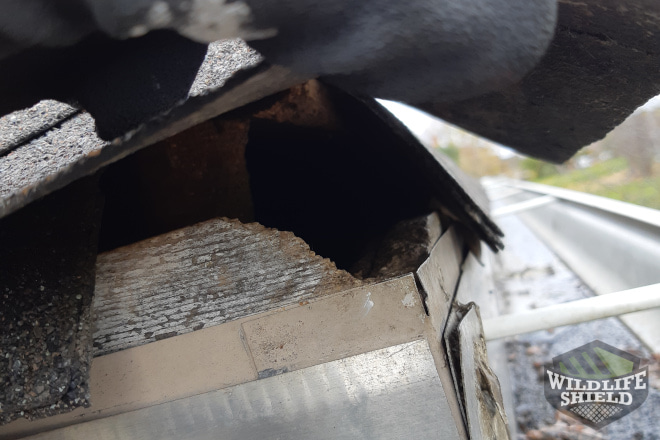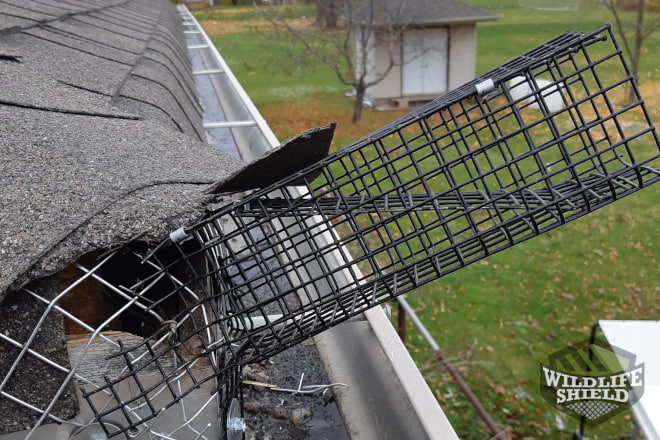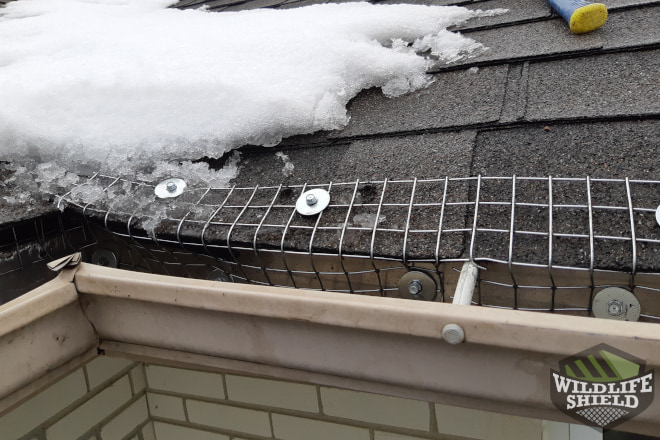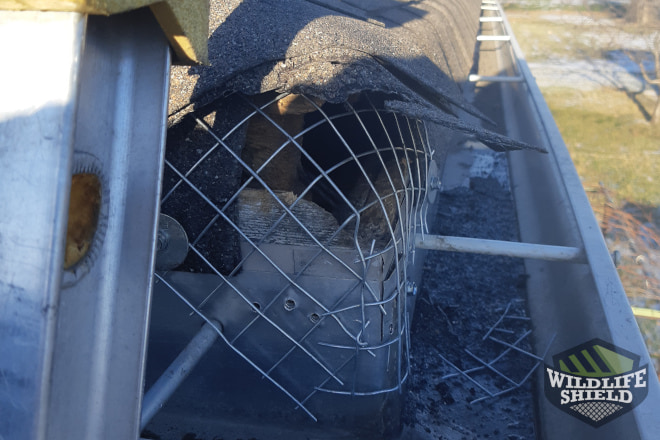The following case study details a squirrel removal job in Brampton. A squirrel chewed through the drip edge of a single-family home so it could nest in the attic. To remove it, a member of the Squirrel Control team installed a one-way door to the hole in the drip edge. A full exclusion of the roof has since kept this property safe from squirrels. Read on to understand our inspection, removal and exclusion process.
Inspection
With every case, our technicians carry out detailed inspections. This helps to determine the causes of the infestation as well as the exact location of the nest. We look for the squirrel’s entry point and every other vulnerability on the property. The inspection is the first step of any wildlife removal service. It enables us to get rid of the squirrel quickly and prevent it from coming back by addressing every other weakness we find.
In this case, the technician found a hole in the edge of the roof, above an eavestrough. Lifting the shingles gently revealed chew marks and a gap just wide enough to fit a squirrel. This is a typical entry point. Squirrels exploring the edges of the roof find gaps in the outer framing of the house, then chew the gaps wider so they can fit.


To get the squirrel out, the technician recommended having a one-way door installed to the chewed hole. The one-way door looks like an open-ended trap. It is made of steel mesh and has a flap inside it that swings outward. When the squirrel wants to go out, it simply pushes its way through the door, then it cannot get back inside. This is a highly effective and humane way to get rid of squirrels.
The homeowner in this case agreed to evict the squirrels with the one-way door, and to have the rest of the roof’s edge excluded. The technician then grabbed his materials and got to work right away.
Removal and Exclusion
First, the technician installed the one-way door. This was screwed directly onto the opening in the roof that the squirrel had chewed wide. Within a few days, the squirrel would leave. It was mid-September, so the squirrel had either built the nest for the winter, or it was weaning off its young. Squirrels have babies in early spring and late summer. In either case, squirrels usually have more than one nest at a time. Once out, it would switch to another nest.

After the installation of the one-way door, the technician put mesh along the edge of the roof that was vulnerable to squirrels. A total of 6 feet of mesh was installed. The mesh we use is a 16-gauge, galvanized steel mesh. Its thickness and durability make this mesh totally wildlife-proof. Squirrels cannot chew through it and raccoons cannot tear it off.

Within a few days, the squirrels in the attic stopped making noise. They had crawled out of the attic and found another place to nest. The technician then returned to the property, removed the door, and replaced it with mesh. This service comes with a 2-year warranty, so if squirrels were to break through it, a member of the Squirrel Control team will come back and fix the mesh.

Conclusion
Squirrel invasions like these are quite common. Squirrels looking for a place to raise their young or wait out the cold are attracted to attics. They are warm, safe, and above ground. If you think you may be dealing with a similar situation, give us a call. We provide humane and affordable squirrel removal services in Brampton and throughout the Greater Toronto Area. Call us today for an inspection and squirrel solution that works for you.